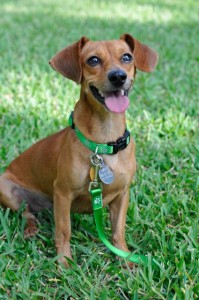Michael Baugh KPA-CTP CPDT-KA CDBC
Here is how one of my mentors used to put it. Some things trainers teach are simply their opinion. Others are the opinions shared among many trainers. Then there are the facts, verified, and peer-reviewed. The latter is what this article is about, the science of dog training.

Here’s what we know for sure. If your dog does something, and that action is followed by a well-timed favorable outcome, the behavior will happen more frequently in the future. Edward Thorndike served up that gem back in 1905. It’s been tested so many times it’s known as Thorndike’s Law of Effect. Trainers know it for its good common sense. Sit followed by a bit of food yields more sits, and faster ones too. Thorndike’s law works for lots of things. Break it and you’re sunk.
We know this too. We can give or withhold good things to change our dog’s behavior. That’s the core thinking behind Skinner’s famous Learning Theory. Our dogs control their own behavior, but we can greatly influence their choices. How cool is that? Dog jumps up; he gets nothing. Dog sits nicely; he gets something nice. What do we get? We get less jumping and more sitting. This is probably the most scientifically tested bit of psychology on the planet. Good things happen – behavior increases. Good things don’t happen – behavior decreases.
It gets better. We influence something else too. We can create cues in the environment, like certain words, hand signals and situations to trigger behaviors. That’s what all these “commands” are about. It’s not trainer magic. It’s science. The cue “sit,” for instance, informs the dog that something good might be afoot. He plants his booty on the ground, because he’s learned that’s a safe bet. Bingo! Here comes the goody. Sit, then, becomes a very powerful word. We could have set up the same chain of events with any stimulus. The science is no different.
Okay, let’s geek out a little. All this boils down to A – B – C. That cue we were talking about is the “A.” It’s called an antecedent. I remember it because I’m asking the dog to do something. I’m polite like that. The “B” is for behavior (what the dog does). The “C” is the consequence, giving or taking something away to influence a change in behavior. That’s Learning Theory. “A” (antecedent): Doggie Come! “B” (behavior) he runs to us full force, tongue lolling out the side of his mouth. “C” (consequence): We throw his favorite ball for him to fetch. Brilliant! Now, here’s the rub. We can greatly influence this whole process, but even if we don’t the process is still always in play. Our dogs are learning just about every waking hour. Check this out. “A” (antecedent): Leftovers on the counter “asking” to be eaten (begging maybe). “ B” (behavior): dog lifts himself to the countertop for a sniff. “C” (consequence): the whole thing ends in a tasty snack. Our dog just learned a new trick and we had nothing at all to do with it. How about that Dr. Skinner?
Good dog trainers and behavior consultants know this stuff backwards and forwards. They’ve studied it; they’ve watched it at work; they’ve applied it in the field. They won’t bore you with all the minutia of contingency statements and functional analysis (okay, I might a little bit). Instead, they will look at any behavior problem and ask: What is the dog actually doing? That’s the behavior itself, like jumping up on the counter. It’s not an interpretation of behavior like, “he’s dominant” or “he’s trying to get back at you.” (That’s non-science). They’ll also ask, what’s triggering the behavior? There’s your antecedent, in this case the sight of the countertop itself. Then they’ll ask, what’s keeping the behavior going? Ah, the consequence! Sometimes there’s food up there.
Move a few puzzle pieces and the picture changes. We can control antecedents and consequences. Adjust those and sure enough your dog changes his behavior. That’s what learning is all about. In this example, keeping the dog out of the kitchen is a good way to avoid the antecedent. Clearing the countertop removes the potential for a yummy consequence. Teaching the dog to put his nose to work elsewhere is even better. Where did my human mom hide that delicious stuffed Kong Toy for me?
Practice your ABC’s. This science left the laboratory more than 70 years ago. Skinner’s students took it on the road in the 1940s training animals for carnivals, movies, TV, and the military. Sea mammal trainers eat, breathe and sleep it. It’s at work right now in your own home, whether you know it or not.
Applied well and gently, science-based training is the stuff of good communication with your dog. Applied lovingly, it’s the path to a deep and abiding friendship. Of course, that last part is simply my opinion.
Michael Baugh teaches dog training online to dog lovers worldwide. He specializes in fearful and aggressive dog behavior.
